Gifts help homebound seniors celebrate holidays
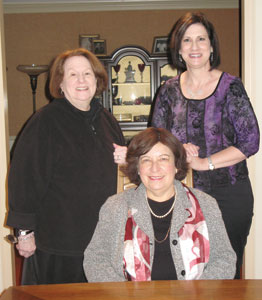 Goldie’s Gifts, a project run by the Chabad House of Greater Kansas City, is undergoing some changes. The program’s chairs, Barbara Frager and Denise Ellenberg, are searching for people who will underwrite a holiday, or holidays, in exchange for naming rights.
Goldie’s Gifts, a project run by the Chabad House of Greater Kansas City, is undergoing some changes. The program’s chairs, Barbara Frager and Denise Ellenberg, are searching for people who will underwrite a holiday, or holidays, in exchange for naming rights.
So Goldie’s Gifts, which provides holiday goodies to homebound seniors in the metro area, could be called Sarah’s Smiles, or Barbara’s Baskets, in memory of or in honor of a person designated by the donor. Regardless of what it’s called, the gifts are delivered five times a year to more than 250 homebound seniors in the area prior to Rosh Hashanah, Chanukah, Purim, Passover and Shavuot.
“Our mission is to try to reach isolated Jewish seniors and give them a taste of the holiday,” Frager said.
The program started three years ago with a donation to Chabad House. The anonymous donor asked that the funds be used for senior services. These funds now need replenishing, and the new donors will be given the option of changing the program’s name for whatever holiday the funds are designated for.
Ellenberg estimates it takes $1,000 a holiday to pay for most of the celebratory baskets. It costs about double that amount — $2,000 — for Passover.
Originally, Frager said gifts were delivered to about 150 people. But through word of mouth and relationships made with senior-living facilities across the area, Frager said they expect to deliver about 300 baskets for Purim.
“If we had enough money and volunteers, I think there are 1,000 people in the area that could and should be getting gifts,” Frager said.
Each holiday basket during the year contains battery-operated candles and literature about the holiday. Except for Passover, Ellenberg said each basket contains challah. Purim baskets will contain hamantaschen, juice, snacks and a piece of fruit. A typical Passover basket will include matzah, fruit and macaroons. Gift cards to help supplement other holiday or personal needs are usually included as well.
It takes about 15 volunteers to prepare the baskets. Ellenberg said students are really helpful and can receive community service hours if they help stuff baskets for the project. Adult drivers are also needed to deliver the baskets.
Ellenberg said some of the seniors enjoy chatting with the delivery drivers.
“I spent 30 minutes visiting with a woman the last time we made deliveries,” Ellenberg said.
“Often times these gifts bring back pleasant memories to these people,” she added.
Other people enjoy the gifts but don’t want to visit. Organizers don’t even know the names of some of the people they deliver baskets to.
“Because of HIPAA privacy rules, a facility usually can’t tell us who we are delivering to. They may tell us they have 10 Jewish residents and we just leave the baskets at the front desk and they are delivered to the resident by a staff member,” Frager said.
Frager and Ellenberg said recipients are grateful for the gifts.
“I’ve had people say to me, ‘Why me?’ I say why not you,” Frager said.
Ellenberg said many of the recipients are lonely and don’t have much, if any, contact with family or anyone else.
“They don’t call JFS because they don’t think they are really in need. But they are in spiritual need for human contact,” Ellenberg said.
Anyone interested in donating money for Goldie’s Gifts, or who can volunteer in any way, should contact Blumah Wineberg at 913-940-1113. Or contact Chabad House at .



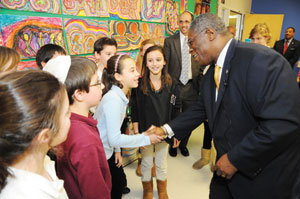 Kansas City Mayor Sylvester “Sly” James made his first visit to Hyman Brand Hebrew Academy on Thursday, Feb. 24. The Kansas City Mayor is being honored by HBHA at the upcoming annual Civic Service Award Celebration. James entered the Jewish Community Center rotunda to greetings from HBHA board members, student council members and many curious students.
Kansas City Mayor Sylvester “Sly” James made his first visit to Hyman Brand Hebrew Academy on Thursday, Feb. 24. The Kansas City Mayor is being honored by HBHA at the upcoming annual Civic Service Award Celebration. James entered the Jewish Community Center rotunda to greetings from HBHA board members, student council members and many curious students.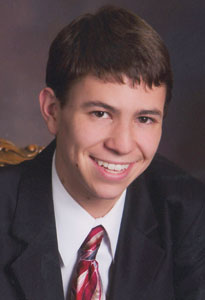 Joseph Hammer likes school so much, he’s decided not to leave. Hammer, 18, wants to pursue a career in elementary education.
Joseph Hammer likes school so much, he’s decided not to leave. Hammer, 18, wants to pursue a career in elementary education. Three former members of the Greater Kansas City chapter of NCSY recently had a brief reunion in Jerusalem for the purpose of this story for The Chronicle. Ari Wolf, Davida Rosenthal and Blake Berkowitz are all taking part in different gap year programs in Israel. (At least one other Kansas Citian, Jonathan Edelman, is also in Israel for this school year.) The three students were excited to see each other since they are based in three different parts of the country — Ari lives in the Golan Heights, Davida is in Beit Shemesh and Blake is in Jerusalem.
Three former members of the Greater Kansas City chapter of NCSY recently had a brief reunion in Jerusalem for the purpose of this story for The Chronicle. Ari Wolf, Davida Rosenthal and Blake Berkowitz are all taking part in different gap year programs in Israel. (At least one other Kansas Citian, Jonathan Edelman, is also in Israel for this school year.) The three students were excited to see each other since they are based in three different parts of the country — Ari lives in the Golan Heights, Davida is in Beit Shemesh and Blake is in Jerusalem.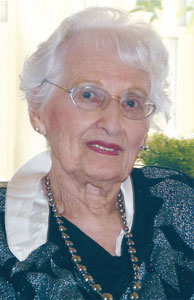 CELEBRATING BIRTHDAY 102 — We are hearing more and more about centenarians living very healthy and happy lives. One of those centenarians is Gertrude Stern, who will celebrate her 102nd birthday on Feb. 27. We’re told she’s healthy, active, alert and vibrant. She even attends an exercise class twice a week and volunteers at a nearby church sewing once a week. Her family says she is “truly a marvel.” Enjoy your day, Gertrude!
CELEBRATING BIRTHDAY 102 — We are hearing more and more about centenarians living very healthy and happy lives. One of those centenarians is Gertrude Stern, who will celebrate her 102nd birthday on Feb. 27. We’re told she’s healthy, active, alert and vibrant. She even attends an exercise class twice a week and volunteers at a nearby church sewing once a week. Her family says she is “truly a marvel.” Enjoy your day, Gertrude!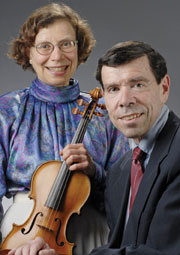 GOLDENBERG DUO FREE RECITALS — The brother and sister team of Susan and William Goldenberg will present a series of free recitals in March. Susan is a violinist with the KC Symphony. William is distinguished professor of piano at Northern Illinois University. They will present works by Handel, Rachmaninoff, Oscar Peterson, Gershwin, Grieg and Asian composers.
GOLDENBERG DUO FREE RECITALS — The brother and sister team of Susan and William Goldenberg will present a series of free recitals in March. Susan is a violinist with the KC Symphony. William is distinguished professor of piano at Northern Illinois University. They will present works by Handel, Rachmaninoff, Oscar Peterson, Gershwin, Grieg and Asian composers.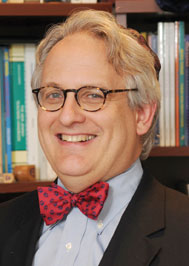 The board of directors of The New Reform Temple has recommended that Rabbi Alan Londy be retained as the congregation’s permanent rabbi. Rabbi Londy began serving the Reform congregation on an interim basis on July 1, 2011, while it searched for a permanent rabbi to replace Rabbi Jacques Cukierkorn. In late December 2010 the congregation announced that Rabbi Cukierkorn’s contract would not be renewed and the congregation and the rabbi ended its professional relationship in April 2011.
The board of directors of The New Reform Temple has recommended that Rabbi Alan Londy be retained as the congregation’s permanent rabbi. Rabbi Londy began serving the Reform congregation on an interim basis on July 1, 2011, while it searched for a permanent rabbi to replace Rabbi Jacques Cukierkorn. In late December 2010 the congregation announced that Rabbi Cukierkorn’s contract would not be renewed and the congregation and the rabbi ended its professional relationship in April 2011.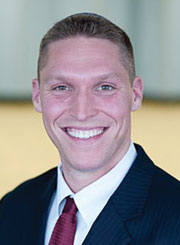 Rabbi Shmuly Yanklowitz has been chosen by Kehilath Israel Synagogue to serve as its next rabbi. Rabbi Yanklowitz will take over Aug. 13, when Senior Rabbi Herbert H. Mandl retires after serving the traditional congregation for 35 years.
Rabbi Shmuly Yanklowitz has been chosen by Kehilath Israel Synagogue to serve as its next rabbi. Rabbi Yanklowitz will take over Aug. 13, when Senior Rabbi Herbert H. Mandl retires after serving the traditional congregation for 35 years.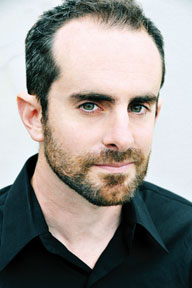 Bestselling author, scholar and LGBT (lesbian, gay, bisexual and transgender) activist Jay Michaelson will be in Kansas City Tuesday, Feb. 21, to discuss his latest book, “God vs. Gay? The Religious Case for Equality” (Beacon Press, 2011). The event begins at 7 p.m. at the LIKEME Lighthouse, 3900 Main Street, Kansas City, Mo.
Bestselling author, scholar and LGBT (lesbian, gay, bisexual and transgender) activist Jay Michaelson will be in Kansas City Tuesday, Feb. 21, to discuss his latest book, “God vs. Gay? The Religious Case for Equality” (Beacon Press, 2011). The event begins at 7 p.m. at the LIKEME Lighthouse, 3900 Main Street, Kansas City, Mo.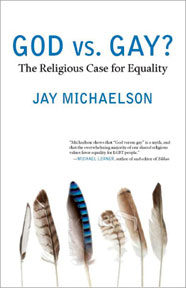 He explains that the main argument of “God vs. Gay” is that while there are a tiny handful of ambiguous and limited verses that talk about same-sex intimacy they are subject to interpretation. He also notes that homosexuality is not specifically mentioned in the Bible because that concept wasn’t invented until the 19th century.
He explains that the main argument of “God vs. Gay” is that while there are a tiny handful of ambiguous and limited verses that talk about same-sex intimacy they are subject to interpretation. He also notes that homosexuality is not specifically mentioned in the Bible because that concept wasn’t invented until the 19th century.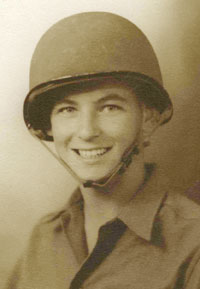 Like many soldiers, Jack Krashin was only 18 years old when he was drafted into the U.S. Army after he graduated from high school in 1943. Sixty-nine years later, he still proudly speaks of his service to his country, and daily feels the effects of it.
Like many soldiers, Jack Krashin was only 18 years old when he was drafted into the U.S. Army after he graduated from high school in 1943. Sixty-nine years later, he still proudly speaks of his service to his country, and daily feels the effects of it. Krashin was awarded for his bravery in battle with a Bronze Star Medal. His Combat Infantry Badge recognizes the fact that he personally fought in active ground combat while an assigned member of an infantry unit in World War II. After he was wounded by shrapnel in battle, he was also awarded a Purple Heart.
Krashin was awarded for his bravery in battle with a Bronze Star Medal. His Combat Infantry Badge recognizes the fact that he personally fought in active ground combat while an assigned member of an infantry unit in World War II. After he was wounded by shrapnel in battle, he was also awarded a Purple Heart. History can be buried, but that doesn’t mean it must be forgotten.
History can be buried, but that doesn’t mean it must be forgotten.